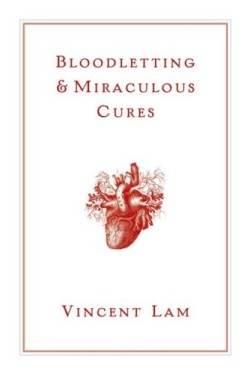Bloodletting & Miraculous Cures
Stories
- 2007 INDIES Winner
- Bronze, Short Stories (Adult Fiction)
When medical student Ming misplaces the head of her cadaver midway through dissection, readers should be prepared for a graphic, yet touching and often tragic, glimpse into the challenges of a medical career. Ming and her classmates Sri, Chen, and Fitzgerald face a variety of troubling circumstances on their intersecting journeys to becoming physicians.
In his first book, Lam keeps pace with each young doctor through the turmoil of romance, the chaos of the emergency room, the somber bedside of the dying, and the subconscious of patients, while maintaining a bird’s-eye view of all the action. Relying on his experience as an emergency physician educated and trained in this medical setting, Lam creates a comprehensive and realistic image of how his heroes tackle each malady presented.
Using a combination of perspectives to tell their stories, Lam begins in first-person in one chapter, and then switches to third-person in another. He also incorporates three subordinate characters—two patients, Winston and Janice, and a nurse, Delores—to shed further light on his physician leads. Inner thoughts are set off in italics.
This literary device works, for example, when recounting the intensity of emotion and staunch resolve displayed by both Dr. Ming and her patient, Janice. Trapped in the throes of a natural childbirth gone bad, Janice makes a bold decision:
The actual operation—you can do it even if I am awake, right?
Why do I feel calm, having said that? It’s me asking, that’s why, No- not asking, I’ve made my offer.
No one moved.
“They call it a Caesarean section,” said Dr. Ming, “because it comes from the time of the Caesars in Rome. They used to tie the woman down.”
At other times, this switch causes confusion. The reader may come away feeling that a side-character was more distracting than developmental. Such is the case of Delores, a mid-career nurse assigned to treat patients with Severe Acute Respiratory Syndrome. While her circumstance is dire, she adds only minimal understanding of the main players.
Lam spends many pages exploring Chen and Fitzgerald and far fewer on Sri and Ming, who seemed equally engaging. Mostly, however, the shifting perspective method works to deliver as complete a portrait as possible of each physician.
Fans of medical drama and even nonfiction should be drawn into the daily lives of Lam’s sympathetic characters. Readers with less medical savvy will benefit from the explanations provided in a glossary of terms.
The title of Lam’s book seems strange. But he may have meant it to imply the emotional “bloodletting” each character must undergo to endure or the “miraculous cures” of unexplainable synchronicity that propel his physicians toward their final destinations.
Reviewed by
Mary Spiro
Disclosure: This article is not an endorsement, but a review. The publisher of this book provided free copies of the book to have their book reviewed by a professional reviewer. No fee was paid by the publisher for this review. Foreword Reviews only recommends books that we love. Foreword Magazine, Inc. is disclosing this in accordance with the Federal Trade Commission’s 16 CFR, Part 255.

